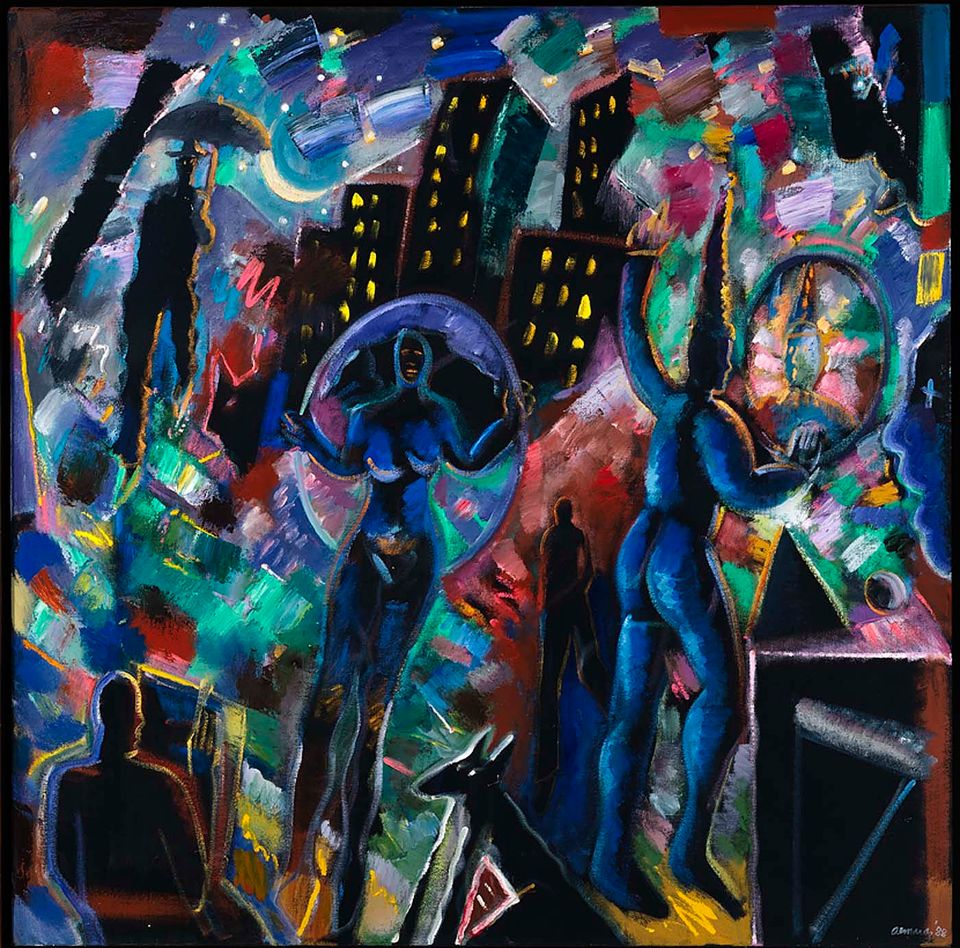Artwork Details
- Title
- Guerra, from Méchicano 1977 Calendario
- Artist
- Date
- 1977
- Location
- Not on view
- Dimensions
- sheet and image: 22 x 28 in. (55.9 x 71.1 cm)
- Copyright
- © 1977, Leonard Castellanos
- Credit Line
- Museum purchase through the Luisita L. and Franz H. Denghausen Endowment
- Mediums Description
- screenprint on paper
- Classifications
- Object Number
- 2012.53.4
Artwork Description
Our America: The Latino Presence in American Art, 2013
Los calendarios son una forma de arte popular común en los hogares en los dos lados de la frontera entre México y los Estados Unidos. Captaron la atención de muchos artistas chicanos que los vieron como valiosos repertorios de imágenes mexicanas, como los dioses aztecas legendarios y los héroes históricos. Los artistas que participaron en el Méchicano 1977 Calendario transformaron esta tradición en términos del arte comprometido. La página del calendario correspondiente a mayo celebra los antiguos festivales de primavera que luego se relacionarían con el Primero de Mayo. Septiembre, cuando los estadounidenses celebran el Día del Trabajo, presenta un brazo alzado demandando la justicia social. Octubre fusiona los símbolos de la paz, de la Unión de Campesinos y de la victoria revolucionaria. Un tanque amenazante domina el paisaje en marzo, quizás aludiendo a las dictaduras militares en ascenso en América Latina durante esos años.
Nuestra América: la presencia latina en el arte estadounidense, 2013














